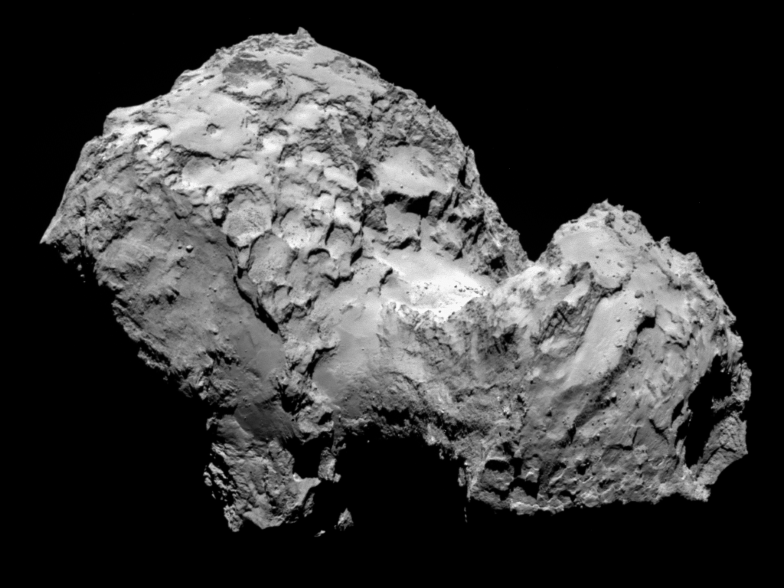This is what it looks like on a comet

ON FIRST GLANCE it looks like some sort of rocky polar landscape at midnight. Instead the above image was taken on Wednesday of a comet hundreds of millions of kilometres away. Now scroll up and take a closer look.
The image was taken by the narrow-angle camera on the main imaging system of the European Space Agency’s (ESA) Rosetta spacecraft, which has been orbiting comet 67P since August 2014 – a decade after it launched from Earth. Rosetta’s landing module, Philae made history when it successfully landed on the comet in November 2014.
Since then, both Rosetta in orbit and its lander module on the comet’s surface have been returning incredible otherworldly images like this one, along with important data for scientists. For example, just last week the ESA reported discovering the crucial ingredients for the origin of life on the comet, adding weight to the idea that comets may have delivered to early Earth the building blocks (water and organic molecules) for the emergence of life.

Comet 67P by Rosetta’s OSIRIS narrow-angle camera on 3 August 2014 from a distance of 285km. (Credit: ESA/Rosetta/MPS for OSIRIS Team MPS/UPD/LAM/IAA/SSO/INTA/UPM/DASP/IDA)
Comet 67P/Churyumov–Gerasimenko was discovered on 22 October 1969 at a Russian observatory. It orbits our Sun between the orbits of Jupiter and Earth, in other words between 800 million and 186 million kilometres from the Sun.
The prime objective of the Rosetta mission is to help understand the origin and evolution of our Solar System, as comets are thought to be primitive bodies preserving the earliest record of material from the nebula out of which our Sun and planets were formed.
This image was published as the Image of the Day on 3 June from Rosetta’s OSIRIS instrument (Optical, Spectroscopic, and Infrared Remote Imaging System), which can capture photos with resolutions as high as 2cm per pixel.
READ MORE:
- World history as probe lands on comet
- The number of known planets just doubled
- NASA releases epic transit of Mercury video




